The brown jelly disease is a severe illness that may quickly kill your coral if left unchecked.
Today, we’ll go over all you need to know about the brown jelly illness, including its causes, symptoms, and treatment options.
What Is The Cause Of Brown Jelly Disease?
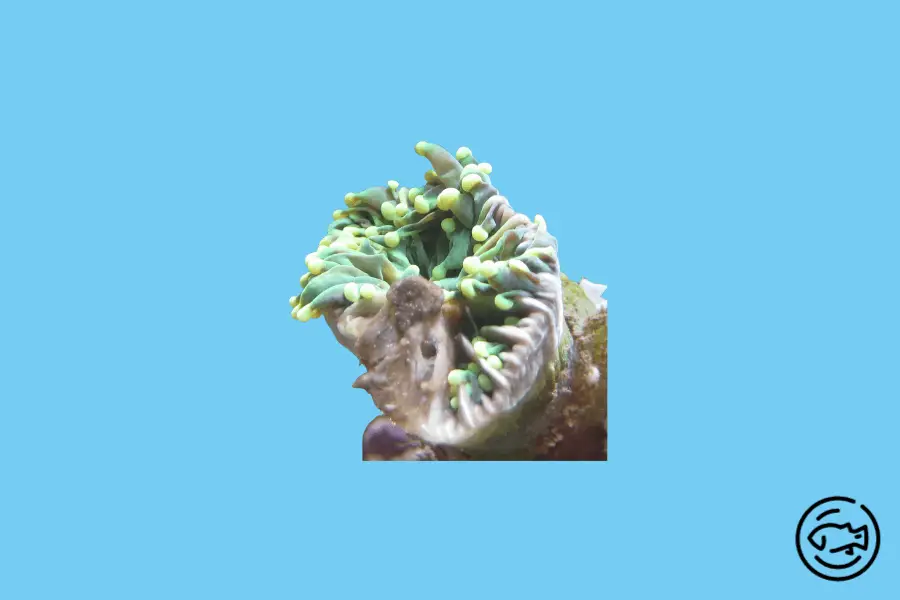
Unfortunately, nothing is known about the exact etiology of brown jelly illness. The jelly comprises various things, including bacteria, protozoans, and dead or dying coral tissue.
However, some study shows that this illness is linked to the presence of the protozoan Helicostoma Nonantum. Large quantities of this protozoan are usually shown while analyzing the jelly generated by this illness.
The Brown Jelly Syndrome (BJS) is characterized by a brown mass that resembles jelly. It moves and looks to be floating on the coral’s surface.
If this sickness is treated, it is frequently linked with a rotting odor.
Brown Jelly Syndrome appears to be confined to aquariums, and no natural illnesses have been documented with a similar appearance.
Because tissue loss is rapid and highly infectious, it can quickly spread to other healthy corals of any kind.
Despite this, the specific involvement of this protozoan in the illness remains unknown. It might be the disease’s primary cause, or it could be a secondary organism attracted to diseased coral tissue.
Brown jelly is a sign of an underlying illness rather than a sickness in and of itself.
It might be the consequence of an infected injury your coral has received, a bacterial infection your coral has acquired, or a stressful environment in which your coral is living.
In any event, if you discover indications of the brown jelly syndrome in your coral, it’s critical to cure it as quickly as possible; else, your coral might suffer significant repercussions.
The pathophysiology of this illness is marked by enormous numbers of the Ciliate Helicostoma Nonantum, even though the underlying etiology is unknown.
A recent study has discovered that these ciliates are identical to those involved with aquaria and the wild and are closely related to ciliates associated with another feverish illness, Brown Band Disease.
Should You Be Concerned About Brown Jelly Disease?
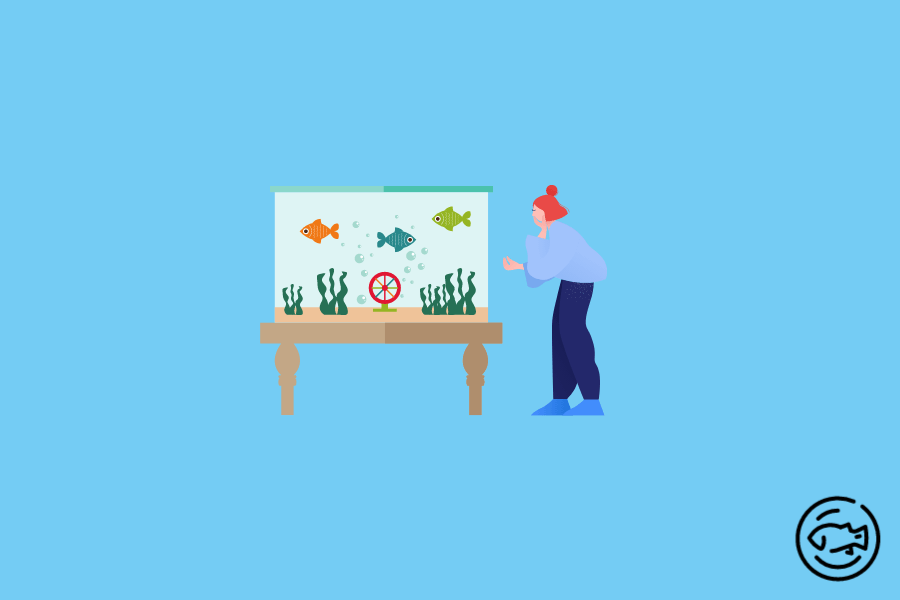
If you notice symptoms of brown jelly in your coral, you should be pretty worried as Brown jelly is almost always deadly to your coral because it may destroy an infected coral in a matter of days to weeks.
Furthermore, if you don’t cure the brown jelly illness quickly enough, it might spread to other corals in your aquarium. Most healthy other corals should be immune to infection from this coral disease, but if you have any damaged corals in your aquarium, they may be vulnerable to infection.
While ciliates are undeniably found in BJD-associated brown jelly, their role in disease pathophysiology is unknown.
They may be only here because they’re eating dead tissue leftover from another infection or a non-pathogenic disease.
Brown Jelly Disease: What To Do If Your Corals Have It?

Brown jelly is regrettably frequently challenging to treat, and corals infected with the illness seldom survive. That is not to assume that all hope is lost if your coral is infected with this illness.
Several therapy options have the potential to be beneficial. In this part, we’ll discuss some of the therapy options available to you.
Euphyllia (and Fimbria Phyllia) are undoubtedly among the most beautiful and famous aquarium corals, and they’re not going anywhere anytime soon.
These thick, flowing, multicolored healthy corals in the aquarium overgrow and are very resilient, yet they are susceptible to only one illness: Brown Jelly Disease.
Microscopic analysis of brown jelly-covered coral tissue has frequently indicated the presence of ciliates in large numbers.
We don’t know what causes coral tissue to break down in the first place, but having a large population of opportunistic ciliates isn’t helping the coral survive.
The conventional recommendation is to tear off and throw away the infected sections of Euphyllia corals plagued by brown jelly outbreaks.
Reef aquarists have tried a variety of antiseptic dips to treat Euphyllia corals affected by brown jelly outbreaks, but nothing appears to help.
It’s worth repeating that the exact origin of brown jelly illness is unknown, and the gelatinous mass is often made up of bacteria and a variety of protozoa, with ciliates being the most common and visible under a microscope.
Nonetheless, if Reef Primer’s effect on these ciliate outbreaks can be replicated, we may have another tool in our arsenal for combating brown jelly disease and other pests.
We’ll be giving Reef Primer more thought when dealing with coral reefs suffering from problems, infections, and other disorders.
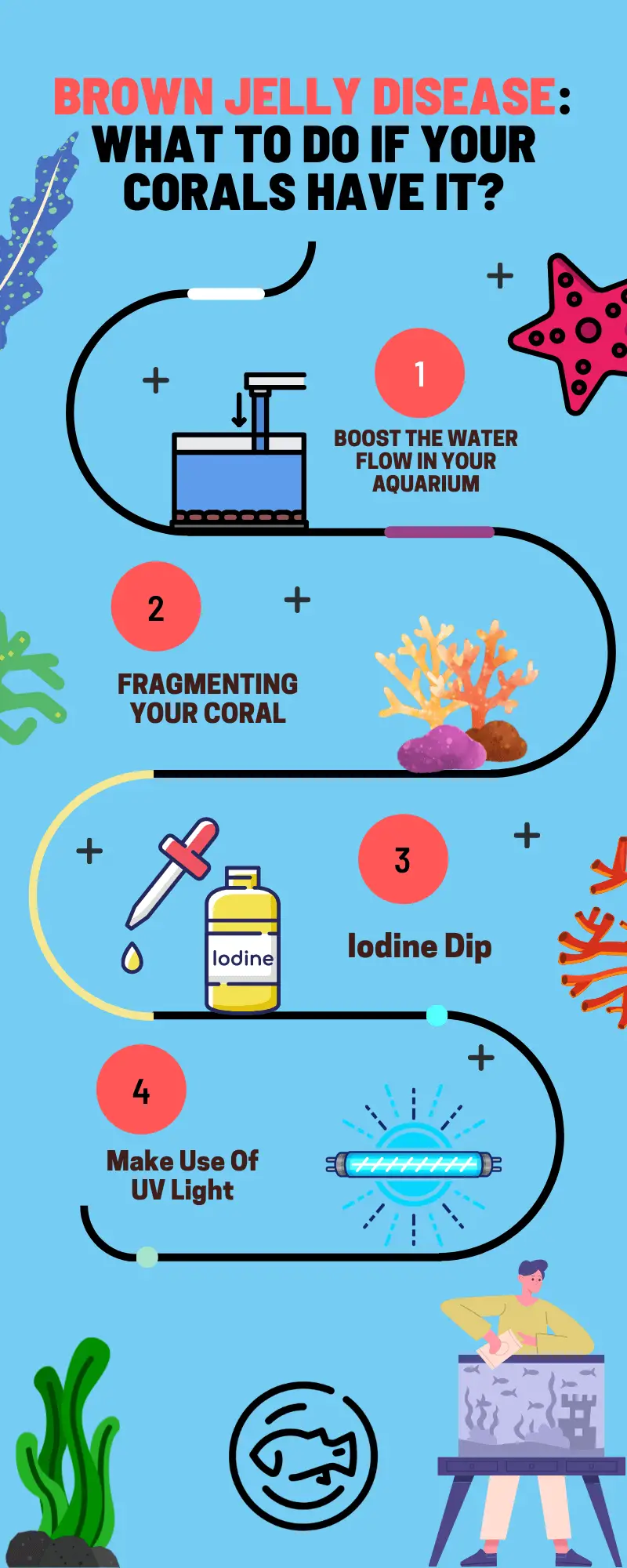
1. Boost The Water Flow In Your Aquarium
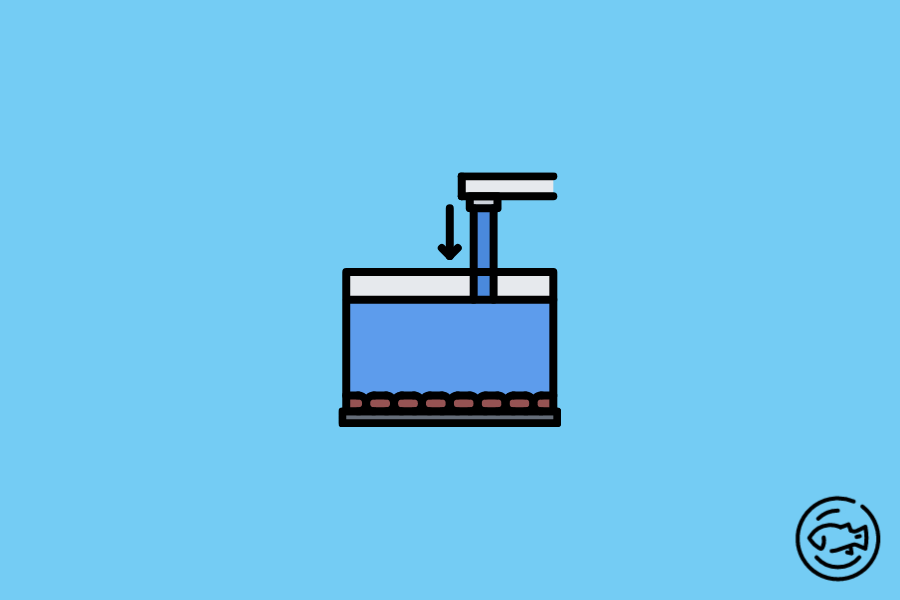
Increasing the water flow in your aquarium might be a cheap and straightforward approach to deal with a case of brown jelly.
However, if your coral has a tiny, localized incidence of this illness, this type of therapy is more likely to succeed.
Increasing the water flow in your aquarium helps your coral absorb more oxygen and nutrients, which is helpful to its general health.
It also prevents brown jelly from forming on your coral by making the water in your aquarium less sluggish.
Also Read: Tibee Shrimp – The Ultimate Care Guide
2. Frag Your Coral
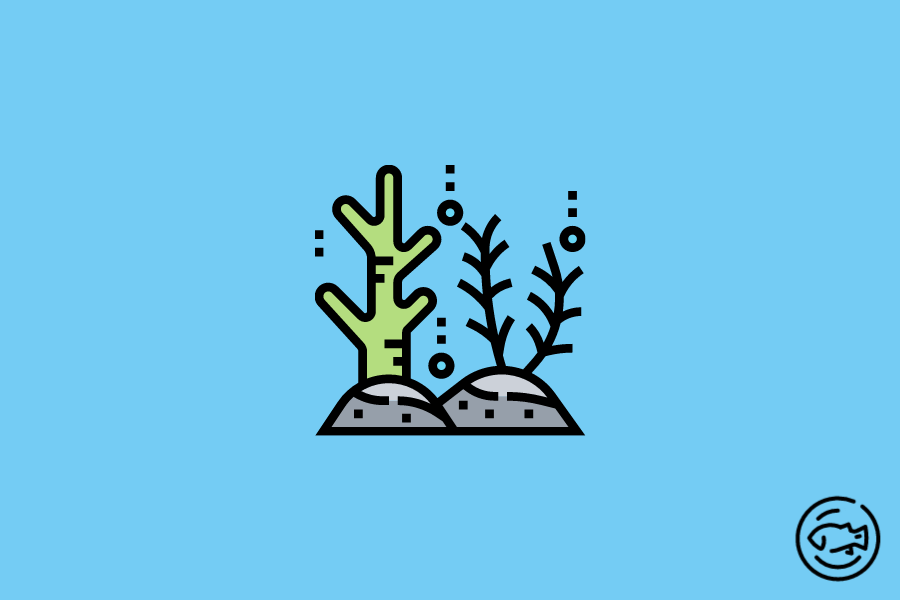
“Frag” your coral means to chop off a piece of it; the phrase is short for “fragmenting.”
If your coral is infested with brown jelly disease, you may need to frag the contaminated areas if you want your coral to live.
While it’s understandable if you’re afraid to frag your coral, it’s frequently essential if it’s suffering from a severe case of brown jelly.
The excellent idea is to use a turkey baster to suck out any excess brown jelly pieces floating around before fragging your coral.
While you’re removing the harmful elements, you should briefly turn off the water flow in your tank to avoid any brown jelly from spreading to your other corals.
3. Iodine Dip
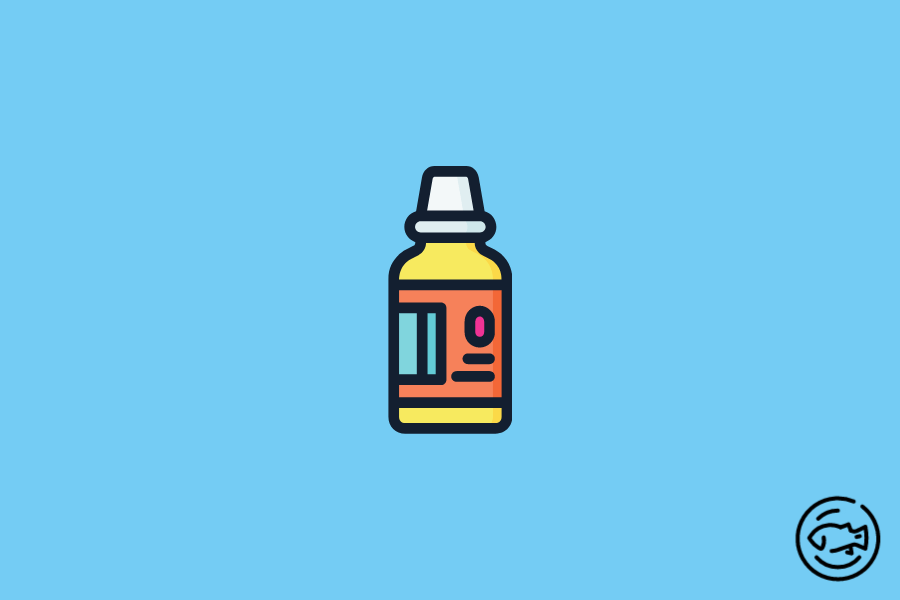
Iodine dips can be used to cure several coral diseases.
All of the procedures for properly treating your coral disease with iodine are outlined below:
- Get some iodine for yourself. Lugol’s iodine is typically the best form of iodine for coral if you can get a bottle.
- To begin with, fill a small isolation tank with clean seawater and add a tiny recirculating filter.
- Get a vessel big enough to contain the coral you’re going to cure.
- For this, a plastic serving saver will suffice.
- That brown jelly material will float away and land wherever you take your sick coral out of the aquarium. This is something you don’t want to happen since it may spread to other coral.
- After that, proceed to your kitchen sink.
- Turn on the cold water as a dribble rather than a powerful spray.
- Use a tiny, natural-bristle paintbrush or a basting brush to apply the paint.
- Rinse the coral under running water while brushing the infected brown jelly down the drain with a soft brush.
- Fill this vessel with water from your tank to the top.
- Iodine should be added to the water.
- Add just enough water to make the water largely opaque. This combination should be thoroughly mixed.
- To keep the water at the right temperature, place the container in an enormous tub with a heater.
- You may also set the container in your aquarium and fasten it to the edge to keep it from leaking.
- Depending on the degree of the illness, dip your coral in the iodine solution for 10 to 35 minutes.
- To make your water, add eight drops per liter.
- This is equivalent to 32 drops per gallon.
- You don’t need to clean your coral before returning it to its original tank once it’s been dipped.
- Keep an eye out for any fresh brown jelly.
If you see the brown jelly disease again, repeat this process of coral dip; however, if you follow the instructions carefully, you should not see it again.
4. Make Use Of UV Light
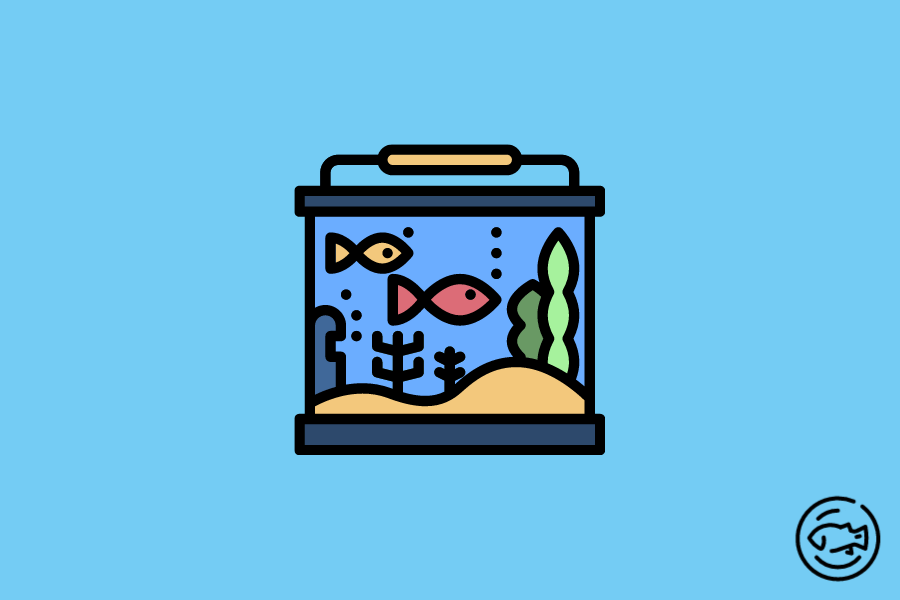
A UV lamp won’t help you treat coral that has already been afflicted with brown jelly disease, but it could help you avoid getting it in the first place.
UV light destroys bacteria and other diseases, so it might prevent your coral from coming into touch with the organisms producing brown jelly.
Keep in mind, though, that UV radiation isn’t a foolproof method of preventing coral illness.
Conclusion
Brown jelly is an insidious and deadly illness that affects many different species of coral.
If your coral develops this illness, you must treat it immediately or risk destroying your aquarium’s coral colony.
Fortunately, if this condition strikes, there are various options for dealing with it.
You have a decent chance of saving the bulk of your coral if you act swiftly and follow the steps that we have mentioned here.


